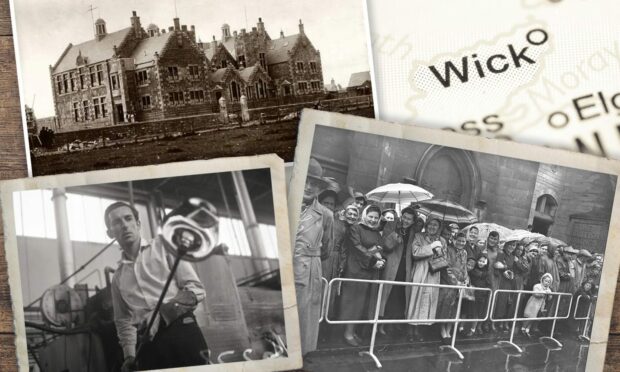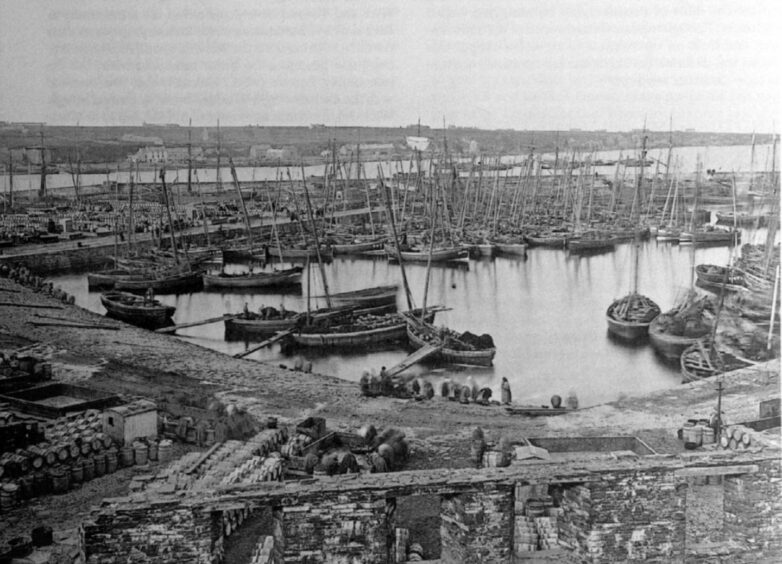The Royal burgh of Wick has a history so ancient it disappears into the mists of the Iron Age.
A skip through the centuries reveals its complex links with the Norwegians and Orcadians, the establishment of the clans Sinclair, Sutherland and Keith and their subsequent hostilities over the centuries.
It wasn’t until the early 19th Century that the town as we know it took shape.
The harbour was built in 1803 marking the start of a hey day in fishing and trade.
In the 20th Century, Wick couldn’t escape the ravages of war.
The enemy was just across the water occupying Norway and, in May 1940, Wick came under frequent air attack.
In 1940, a bomb fell on Bank Row, Pultneytown killing 15, including eight children playing in the street on a summer afternoon.
It was the first recorded daylight bombing of Britain in the Second World War.
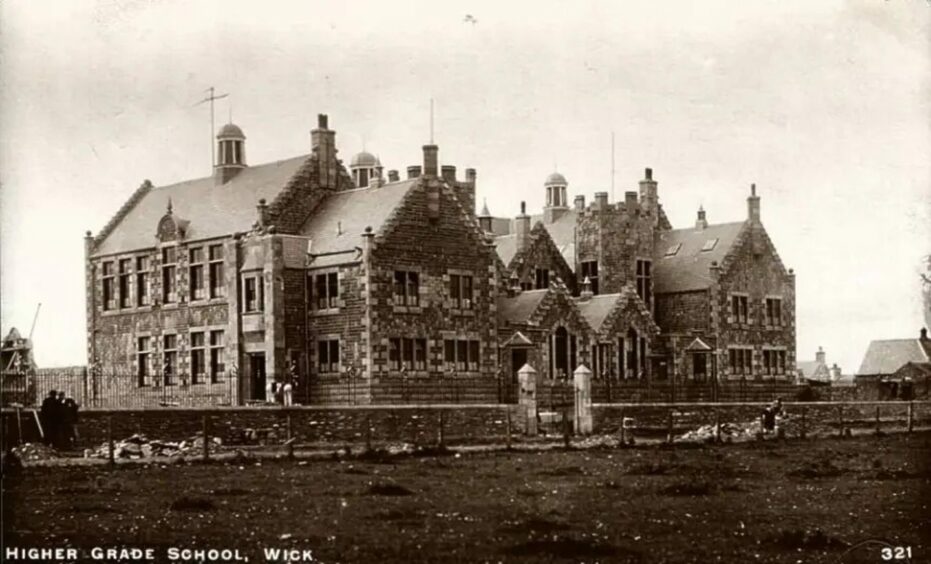
Wick High School opened in West Banks Avenue in 1909.
It was a handsome, imposing building, the most up-to-date educational establishment in the north of Scotland, boasting separate playgrounds and entrances for boys and girls.
The cost of the ornate building was almost £11,000, more than £1.2m today.
There was a row over the £2000 price tag on the gymnasium, with naysayers calling it an unnecessary burden on tax payers.
Science labs
But it had rooms for art and a physics laboratory, optical room and a chemistry laboratory fitted with fume cupboards to deal with experiments using gases such as chlorine and hydrogen sulphide.
In the boom times brought by the advent of Dounreay, the school had four extensions in the 1960s.
Skills for life were imparted – here’s Class 4c learning typing in 1964…
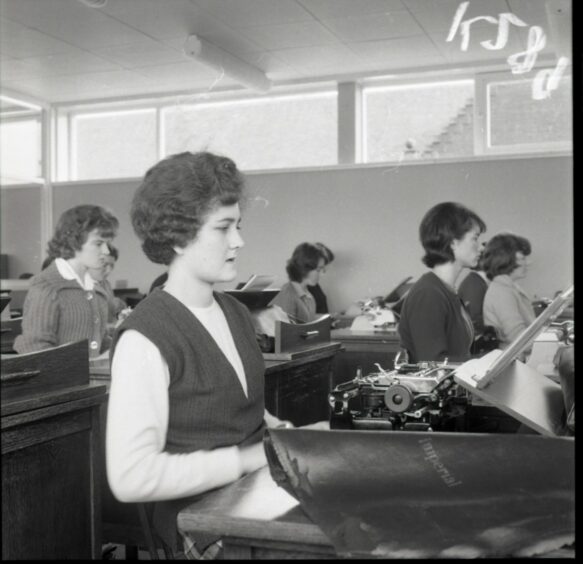
…while the boys looked busy for the photographer in the new reading room.
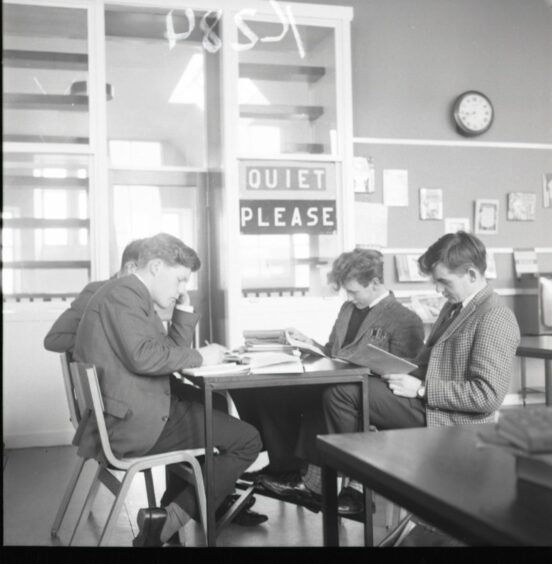
The school had a proud sporting history.
In this 1977 photo, the under-13s rugby team show off the Highland Shield they’d won in Inverness.
Left to right – Brian Cormack, Stuart MacKay, John MacCallum, Angus Mackay, James Mathieson, Andrew Gunn, David Smith and Gavin Sutherland.
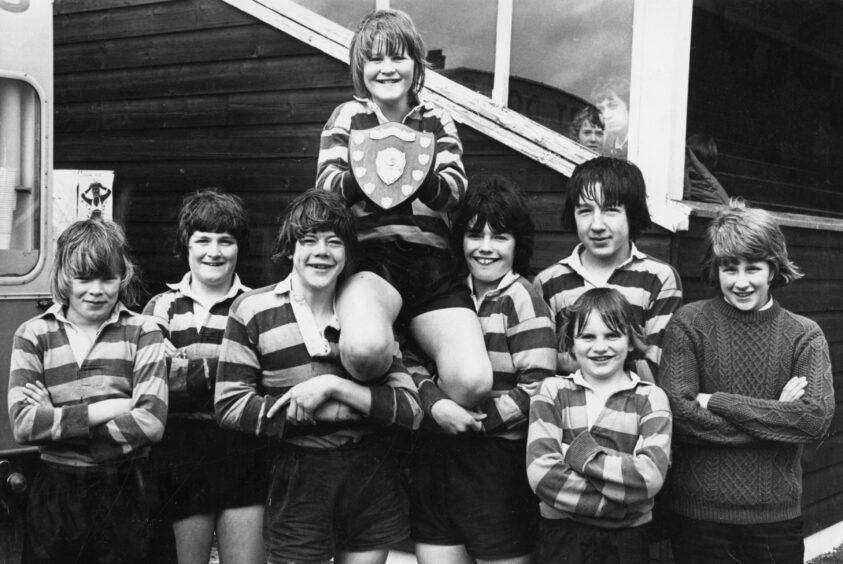
Maritime incidents
Wick has had incidents during its history, many of them maritime in nature.
Here, in August 1982, the Wick registered trawler Fram ran aground on the beach at Sandend.
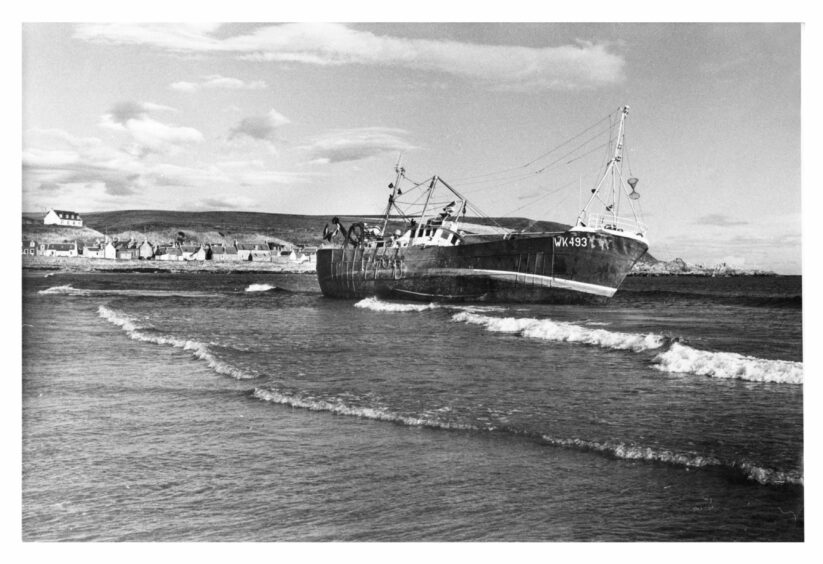
And in November 1954, Wick coastguards were alerted after the 129-ton fishery research vessel Sit William Hardy inexplicably lost radio contact.
Missing Torry vessel
The Torry research station vessel had left to collect shrimp samples one morning, and maintained unbroken radio silence for the next three days.
The ship turned up safe and sound and went on to become well known in the 1970s and 80s as the Greenpeace boat Rainbow Warrior.
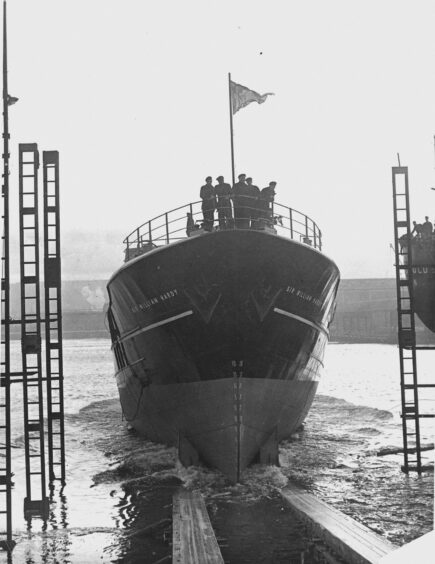
Dr Geoffrey Burgess, Torry director, said the ship was not carrying a radio operator, but the skipper, Captain Arthur Whittleton, Cults, had been instructed to confirm his position every 24 hours. “For some unknown reason this had not been done.”
Wick has never been short of personalities
Here herring fishing veteran James Bremner, skipper of the Fisher Boy (WK152) is recorded for posterity in 1964 as the last of the Wick fishermen to take his craft to East Anglia as part of the traditional herring fishing circuit.
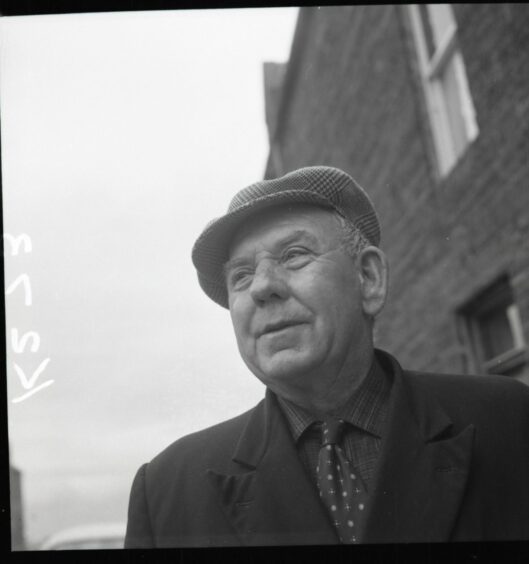
At its height, there were more than 30,000 ships involved in the herring industry on the east coast of Scotland, and you could walk across Wick harbour on the decks of the fishing boats packed in.
Vintage car club prize
These representatives of Caithness Vintage Car Club travelled a long way to pick up the club prize in a rally at Kildrummy, near Aberdeen in 1975.
They are pictured celebrating with champagne in the trophy, standing in the 1935 Brough Superior driven by Murdo Sutherland, Wick (second left). Centre is Robin Campbell, Helmsdale, who drove a 1937 Morris 8. Pouring the champagne is Robert Macleod, Wick, who drove a 1935 Standard Avon.
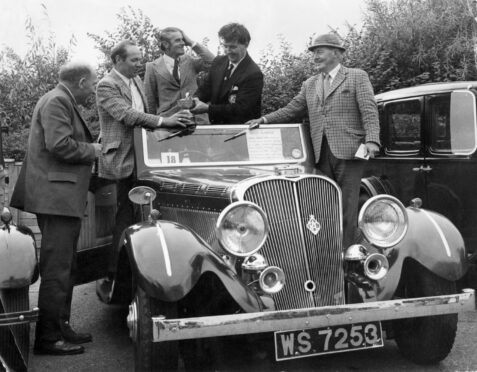
Right is Sandy Gow, Wick, who drove a 1934 Austin 12 Light to third place in the post-vintage cars section. Left is Bert Gunn, Newton House, Lybster, president of the club, who owns all the cars except the Morris 8, owned by Mr R. Mowat, Lybster.
Caithness glass was a jewel in Wick’s crown
Founded in 1961 by Robin Sinclair, 2nd Viscount Thurso, Caithness Glass has become a worldwide phenomenon.
Its factory in Wick allowed visitors to walk among the glassblowers in the 60s and 70s.
Here’s glassblower Chic Young in action in 1964.
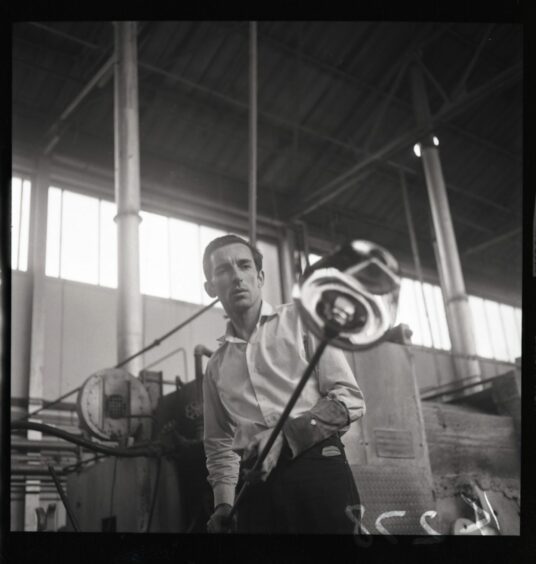
Cathie Harper cuts a tumbler vase in the Wick factory in 1964.
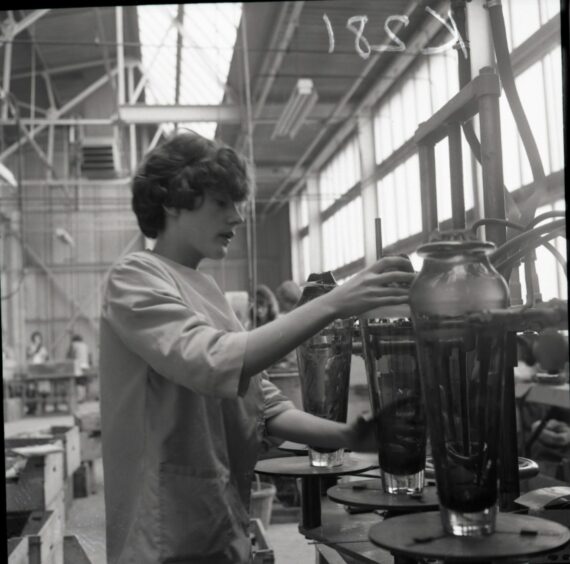
Royal visitors
The Queen Mother was a frequent presence in the town when she holidayed half an hour away at Castle of Mey.
Here she is, maintaining her elegance despite the weather, in the town in 1956.
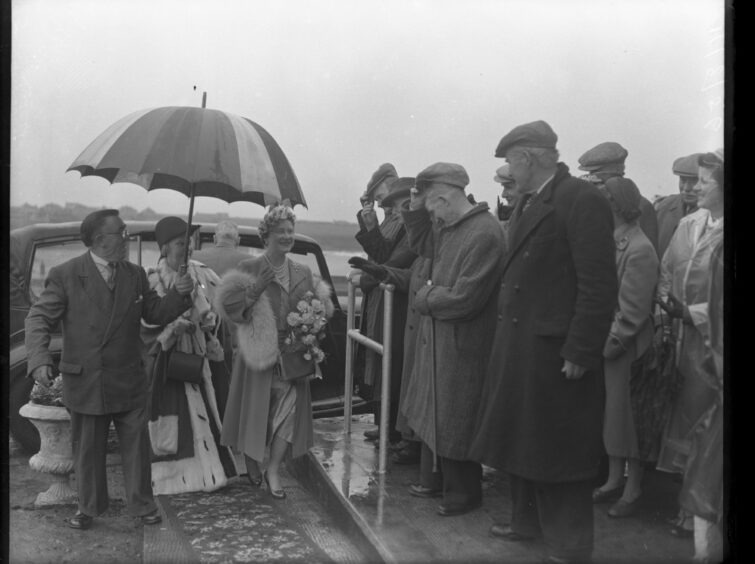
On the same occasion, the weather also failed to deter crowds of onlookers waiting to catch a glimpse of the royal visitor.
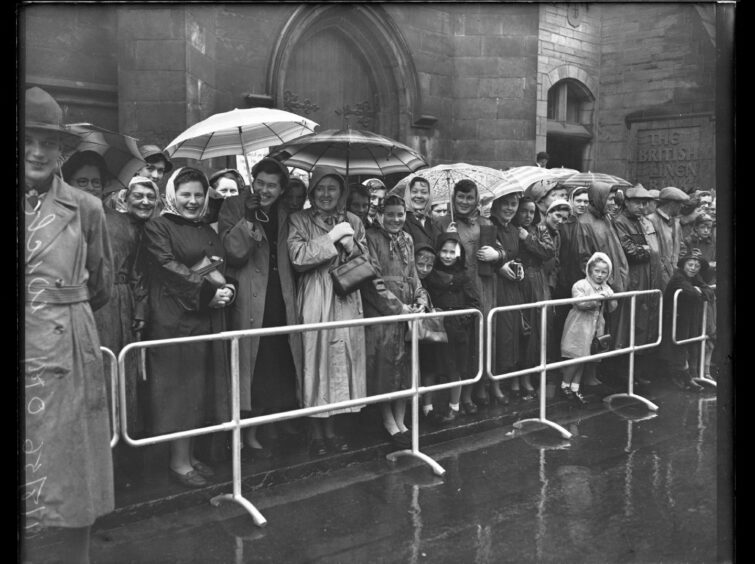
The queen, pictured here in 1964, inspecting the sea and army cadets on parade in Wick’s Assembly Rooms.
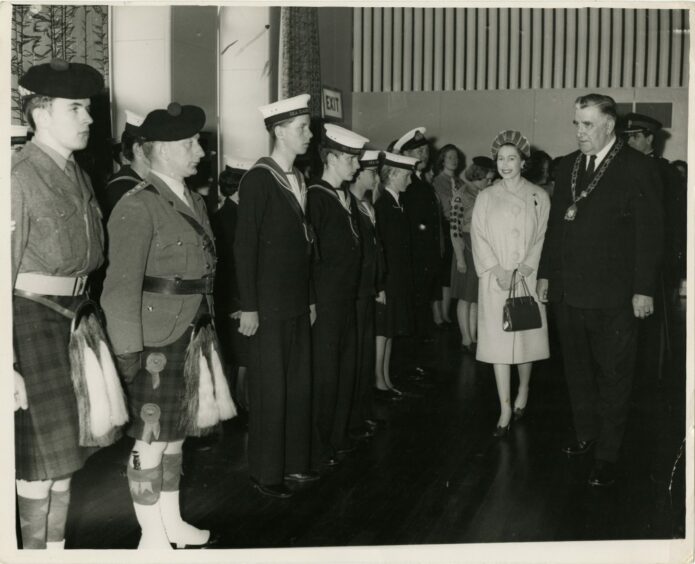
Prince Charles has also been a frequent visitor down the years.
Here he’s pictured arriving at the newly-refurbished Wick airport in 2005.
He disembarked the royal flight fully decked in Lord of the Isles tartan, and unveiled a special plaque to commemorate the £800,000 revamp.
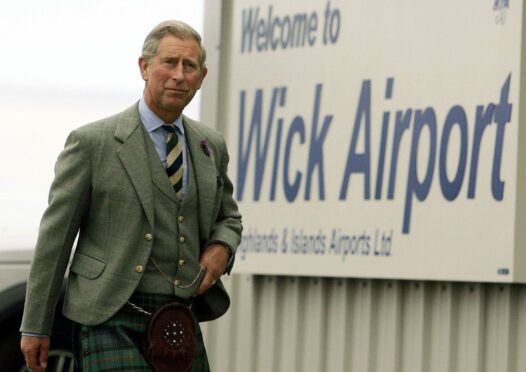
The Highland Games in Mey are often on the royal family’s summer fixture list.
Here is Prince Charles in 2002 before his marriage to Camilla Parker Bowles, sitting with her in the royal tent, accompanied by the Duchess of Devonshire.
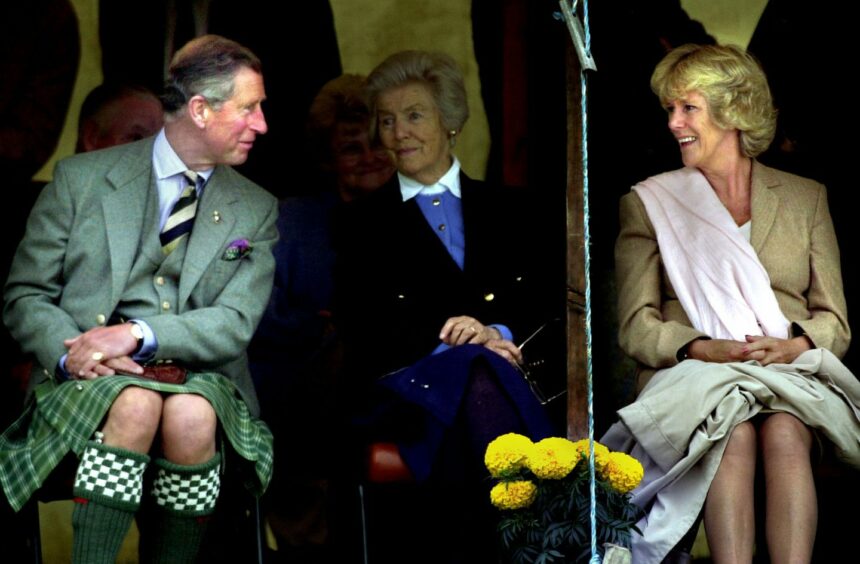
Princess Anne is snapped here leaving Scrabster for Castle of Mey in August 1972.
The P&J reported that she wore a reefer jacket, tweed skirt, headsquare and long boots, and that she later left Castle of Mey by helicopter bound for Wick airport.
From there she headed south on the Queen’s Flight.
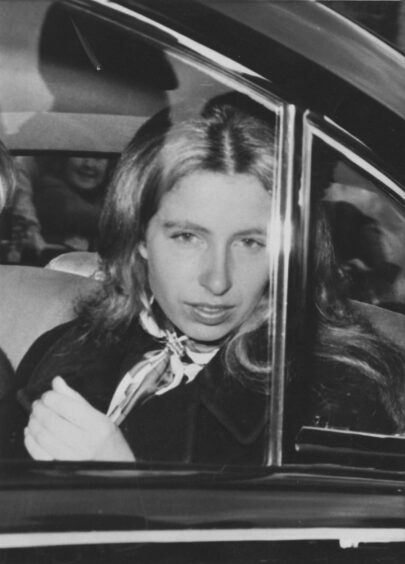
You might also enjoy:
